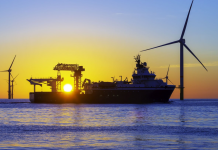The Red Sea is a crucial shipping lane that connects the Middle East and the Far East with Europe and Asia. It is one of the world’s busiest shipping lanes, offering an alternative to the route around the Cape of Good Hope. The Red Sea is of huge strategic importance lying between the continents of Asia and Africa, separating the Middle East, the Far East, Europe, and Asia. It is a natural border between the eastern coast of Africa and the western coast of the Arabian Peninsula and a vital route for unarmed oil transportation through the Bab El-Mandeb in the south to the Suez Canal in the North. The Red Sea is a seawater inlet of the Indian Ocean, lying between Africa and Asia. It has an approx. surface area of roughly 4,38,000 km2 and is about 2,250 km long. At its widest point, it is 355 km wide. The depth of the Red Sea on average is 490 metres. As long as oil remains a primary energy source for the world, this shipping lane will remain a vital channel for its transport from the Gulf. The Red Sea has increasing economic importance as a result of the large oil reserves throughout the region and precious metal resources.

Source: pininterest.com
Geography and Geology: The Red Sea is a narrow sea that is bordered by the Arabian Peninsula to the east and Africa to the west. It is an important waterway that connects the Indian Ocean to the Mediterranean Sea. It has deep trenches and underwater volcanoes that are found there.
SUEZ CANAL:
The Suez Canal is an artificial sea-level waterway in Egypt, connecting the Mediterranean Sea to the Red Sea via the Suez Canal. The canal is 194 km long and is a key trade route between Europe and Asia. It was built by Ferdinand de Lesseps two centuries ago and officially opened on November 17, 1869. The canal offers vessels a direct route between the North Atlantic and Northern Indian Oceans via the Mediterranean Sea and the Red Sea, avoiding the South Atlantic and Southern Indian Oceans.
Incidents and accidents:
- In recent years, commercial ships have faced increasing dangers at sea after armed groups have attacked and seized vessels in waters around the Red Sea and off the coast of Yemen, adding to perils for seafarers.
- The Red Sea is also prone to piracy, smuggling, and illegal fishing, which can pose a significant threat to merchant ships
- Recently, an attempted hijacking of a commercial vessel in the Gulf of Aden has been carried out by armed Somali pirates.
- The incident is the latest in a series of attacks in Middle Eastern waters since a brutal war between Israel and the Palestinian Islamist group Hamas broke out on Oct. 7.
- On Nov. 19, Houthis seized the Galaxy Leader car carrier which was taken to the Yemeni port of Hodeida, the vessel’s owner said.

Source: visualcapitalist.com
An average of 52 ships pass through the Suez Canal every day, carrying hundreds of thousands of containers and millions of tons of cargo.
Case study of EVER GIVEN MERCHANT SHIP:
- The incident caused significant economic losses, with some estimates suggesting that it cost the global economy around $10 billion per day.
- The grounding of the ultra-large container ship Ever Given in the Suez Canal on March 23, 2021, caused a bottleneck that resulted in supply chain delays that continued to be felt months after the incident.

SOURCE: LINKEDIN.COM
- The incident demonstrated how a major strategic axis for world trade and navigation can become a chokepoint
- The Ever-Given container ship was stuck in the Suez Canal for six days before it was freed on March 29, 2021. Ever given not just blocking the path of other ships but also Obstructing the flow of international trade.
Red Sea overall is the artery and vein of the world economy that not just reduce the distance and time of travelling from crossing Asia and Europe but also efficient in terms of cost and environmentally friendly.
Author: ATUL KUMAR RAI
JUNIOR ENGINEER




